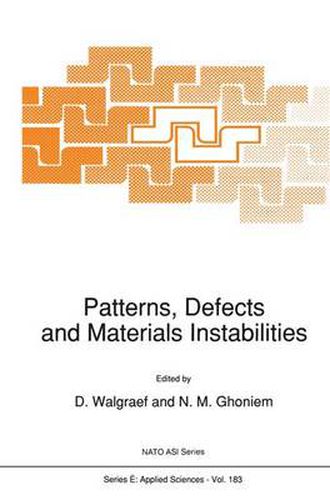Readings Newsletter
Become a Readings Member to make your shopping experience even easier.
Sign in or sign up for free!
You’re not far away from qualifying for FREE standard shipping within Australia
You’ve qualified for FREE standard shipping within Australia
The cart is loading…






This title is printed to order. This book may have been self-published. If so, we cannot guarantee the quality of the content. In the main most books will have gone through the editing process however some may not. We therefore suggest that you be aware of this before ordering this book. If in doubt check either the author or publisher’s details as we are unable to accept any returns unless they are faulty. Please contact us if you have any questions.
Understanding the origin of spatio-temporal order in open systems far from thermal equilibrium and the selection mechanisms of spatial struc tures and their symmetries is a major theme of present day research into the structures of continuous matter. The development of methods for pro ducing spatially ordered microstructures in solids by non-equilibrium methods opens the door to many technological applications. It is also be lieved that the key to laminar/turbulence transitions in fluids lies in the achievement of spatio-temporal order. Let us also emphasize the fact that the idea of self-organization in it self is at the origin of a reconceptualisation of science. Indeed, the appear ance of order which usually has been associated with equilibrium phase transitions appears to be characteristic of systems far from thermal equi librium. This phenomenon which was considered exceptional at first now the rule in driven systems. The chemical oscillations obtained appears to be in the Belousov-Zhabotinskii reaction were initially considered to be ther modynamically impossible and were rejected by a large number of chemists. Now these oscillations and related phenomena (waves, chaos, etc. ) are the subject of intensive research and new classes of chemical oscil lators have been recently discovered. Even living organisms have long been considered as the result of chance rather than necessity. Such points of view are now abandoned under the overwhelming influence of spatio-tem poral organization phenomena in various domains ranging from physics to biology via chemistry, nonlinear optics, and materials science .
$9.00 standard shipping within Australia
FREE standard shipping within Australia for orders over $100.00
Express & International shipping calculated at checkout
Stock availability can be subject to change without notice. We recommend calling the shop or contacting our online team to check availability of low stock items. Please see our Shopping Online page for more details.
This title is printed to order. This book may have been self-published. If so, we cannot guarantee the quality of the content. In the main most books will have gone through the editing process however some may not. We therefore suggest that you be aware of this before ordering this book. If in doubt check either the author or publisher’s details as we are unable to accept any returns unless they are faulty. Please contact us if you have any questions.
Understanding the origin of spatio-temporal order in open systems far from thermal equilibrium and the selection mechanisms of spatial struc tures and their symmetries is a major theme of present day research into the structures of continuous matter. The development of methods for pro ducing spatially ordered microstructures in solids by non-equilibrium methods opens the door to many technological applications. It is also be lieved that the key to laminar/turbulence transitions in fluids lies in the achievement of spatio-temporal order. Let us also emphasize the fact that the idea of self-organization in it self is at the origin of a reconceptualisation of science. Indeed, the appear ance of order which usually has been associated with equilibrium phase transitions appears to be characteristic of systems far from thermal equi librium. This phenomenon which was considered exceptional at first now the rule in driven systems. The chemical oscillations obtained appears to be in the Belousov-Zhabotinskii reaction were initially considered to be ther modynamically impossible and were rejected by a large number of chemists. Now these oscillations and related phenomena (waves, chaos, etc. ) are the subject of intensive research and new classes of chemical oscil lators have been recently discovered. Even living organisms have long been considered as the result of chance rather than necessity. Such points of view are now abandoned under the overwhelming influence of spatio-tem poral organization phenomena in various domains ranging from physics to biology via chemistry, nonlinear optics, and materials science .